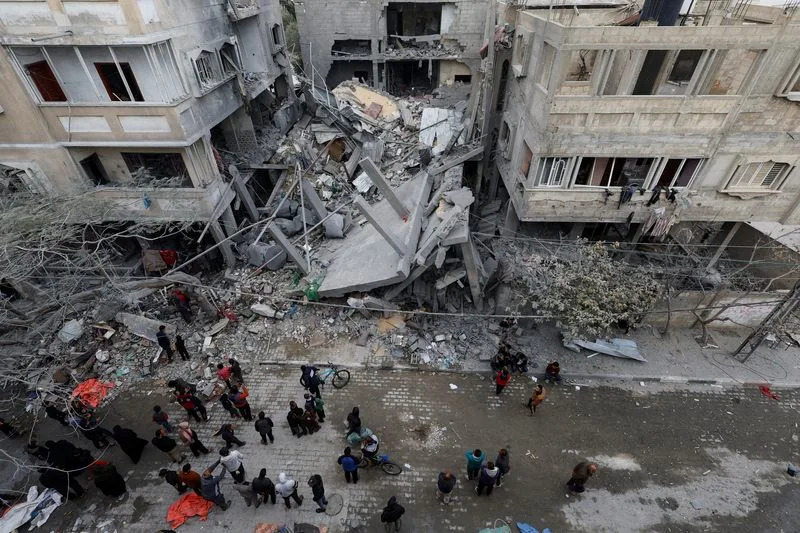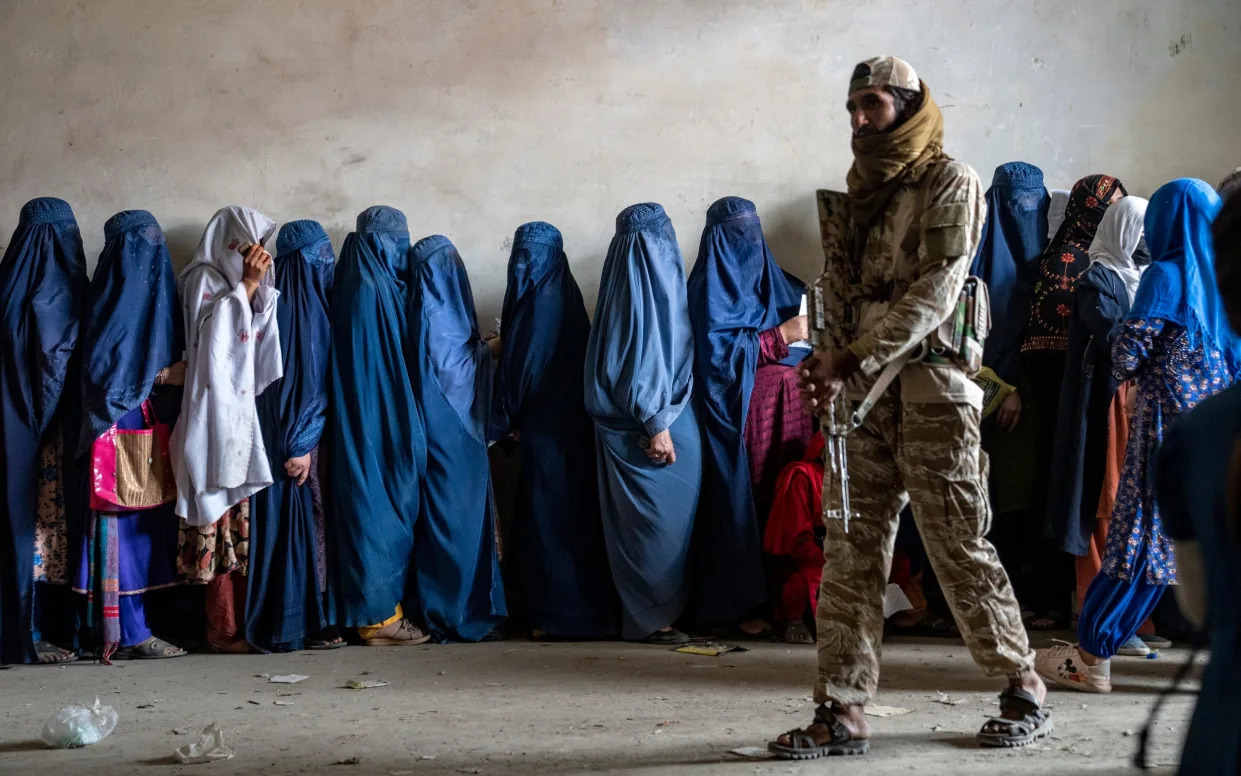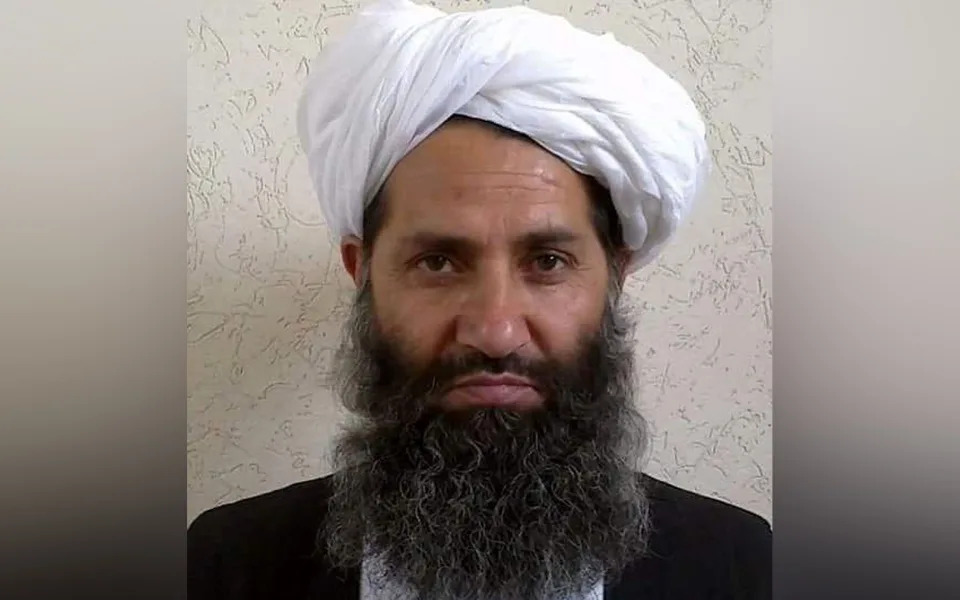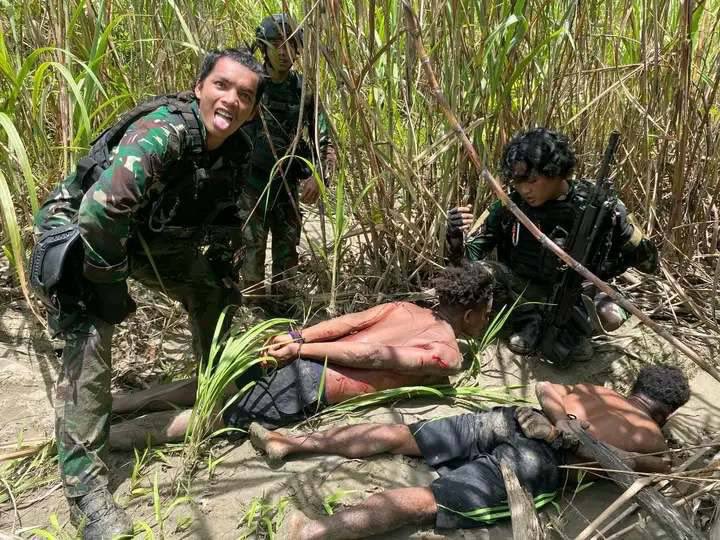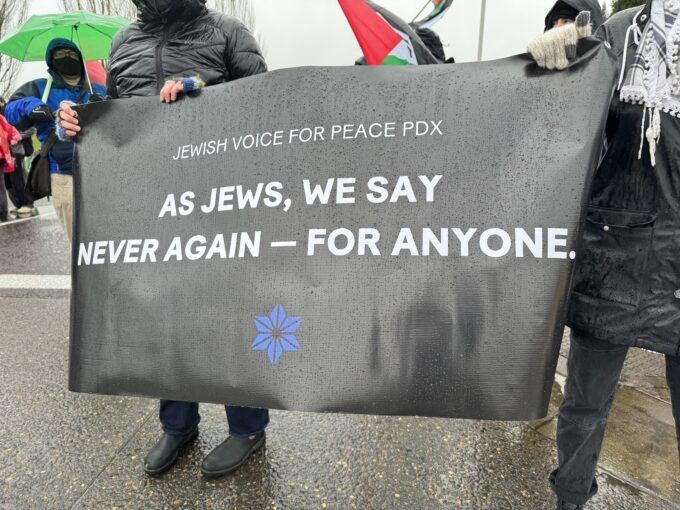
Photograph by Nathaniel St. Clair
In the wake of the deadly Hamas terrorist attacks of Oct. 7, 2023, many of Israel’s supporters, myself included, have succumbed to the understandable impulse for violent retribution. Israel is a land that I love, both culturally as a Jew — and third-generation Holocaust survivor — and spiritually as an ordained cantor. It follows that I have experienced the initial drive for vengeance that has beaten palpably in the hearts of many of my coreligionists after the slaughter that Am Yisraeil (the People of Israel) endured on that awful day. This is the very same feeling with which I and others like me have struggled for decades in the shadow of the mass murder of family members during the Shoah (Holocaust). Any reasonable human being can empathize with this initial reaction, as well as with the overwhelming urge for decisive military action to expedite the return of the Israeli hostages, whose ongoing plight in Gaza and that of their loved ones is unfathomable. As a former prison chaplain and the co-founder of L’chaim! Jews Against the Death Penalty — a group with more than 3,300 members who actively campaign against all executions across the world — I cannot help but see how this longing parallels the toxic feelings that have motivated advocates for capital punishment since time immemorial.
Many death penalty proponents, as I myself used to be, justify their support of retaliatory state killing by invoking the popular misconception of a literal reading of the Biblical verse demanding an “eye for an eye.” This sentiment was on full ignominious display once again just yesterday, when proponents of state killing celebrated Georgia’s execution of Willie Pye. According to Rabbinic interpretation, of course, the notion of “eye for an eye” referred to financial compensation for the value of said eyes. The Jewish version of lex talionis was in fact intended to curtail, rather than feed, the collective yearning for expansive massacres that societies practiced in response to killings. Israel’s excessive action in Gaza demonstrates this danger of collective punishment, offering yet another chilling reminder of Gandhi’s astute observation that “an eye for an eye will only make the whole world blind.”
Let there be no doubt: the issues of judicial executions and war are markedly distinct. Still, the yearning for retribution is a common germ that inevitably infects both cycles of violence. This insidious undercurrent has blinded the Israeli government and many of its staunchest advocates to the human rights violations that the IDF has committed in Gaza. As a result, Israel has mercilessly escalated what had been a necessary initial response to secure its borders after Hamas’ rampage. Likewise, its government has continued to stubbornly pursue a military solution to bringing home the remaining Israeli hostages, at the expense of prospects of diplomatic resolution.
A brief review of the body count bears out this reality. This past October 7th is now the bloodiest day in Israel’s history and the deadliest day for Jews since the Holocaust. On that infamous date, Hamas terrorists slaughtered nearly 1,200 people in southern Israel, injured roughly 1600, and took 253 Israelis back to Gaza as hostages, raping and engaging in unspeakable sexual violence throughout. In response, the Israeli military launched a massive air and ground campaign to attempt to annihilate Hamas. As of this writing, at approximately five months into the war, this operation has led to well over 30,000 Gazan deaths. The vast majority of those killed have been civilian children and women. Hamas already had earned a global reputation as a murderous terrorist organization — one whose very charter calls for the destruction of Israel. Now, history and posterity will also deservedly judge Israel extremely harshly for the exorbitant disproportionality of the death toll it has inflicted. The International Court of Justice and an ever-increasing number of nations and leaders across the world view the extent of Israel’s response as unjustifiable. In the minds of countless individuals, the scale and scope of the resulting devastation on Gazans has even become “genocidal” in nature. How then can it be that many supporters of Israel have sought to rationalize such widespread civilian deaths, eschewing a ceasefire, and flouting international humanitarian law?
To begin to answer this question, I turn to the lens through which I have come to see human behavior in response to some of the most heinous crimes imaginable: from the unparalleled slaughter of the Shoah, to the “worst of the worst” of capital cases, and now to the depraved atrocities of October 7th. The natural penchant for reprisal is evident in all such situations. For my fellow Jews today, this phenomenon is exacerbated by Hamas’ recent triggering of an intergenerational trauma that is still raw in the wake of the Holocaust. I believe this has impaired the vision of many of my well-intentioned peers, blocking their ability to contextualize the breadth of Israel’s response. It has led some to double-down on attempts to discredit the empirics of the civilian casualty tally itself in order to justify their narrative. For certain others, it has contributed to the view that all members of Hamas are subhuman. This characterization calls to mind society’s labeling of those condemned to death rows as “monsters” who are incapable of change. Many defenders of Israel consequently hold the erroneous belief that only the most aggressive Israeli military action in Gaza will deter future violence, rather than incite it further. This sentiment is eerily reminiscent of death penalty proponents’ obstinate adherence to the patently false notion that executions serve as a deterrence to future crimes, instead of perpetuating the cycle of violence.
A tragic byproduct of this kind of collective shortsightedness is the tendency to overlook how more killing invariably fails to bring closure. Regarding the death penalty, studies reveal that the drive for lethal retribution actually interferes with the ability to move forward. The hundreds of murder victim family members that comprise the death penalty abolitionist group Journey of Hope: From Violence to Healingoffer inspiring testaments to this fact. Consider Rev. Sharon Risher, whose mother and cousins were three of the nine African-American victims in the June 17, 2015, Charleston, SC mass shooting at Mother Emanuel AME Church. The US federal government sought to execute 21-year-old Dylann Roof for perpetrating that terror attack. Rev. Risher, however, opposed Roof’s ultimate death sentence, just as she firmly stands against capital punishment in all cases. Risher eloquently articulated her position in a recent USA Today op-ed in response to the Biden administration’s decision to seek execution for the shooter in the May 14, 2022 Tops supermarket massacre in Buffalo, New York. “By not taking a possible death sentence off the table,” Risher wrote, “I believe that [US] Attorney General [Merrick] Garland has denied a turning point for the families that would have allowed them to move toward healing sooner.” Many family members of October 7th hostages know all too well how this also applies in Gaza, where the Israeli government’s decision to keep a ceasefire deal off the table has denied a potential turning point that would halt the ongoing cycle of violence and open the door to a return of their loved ones.
Critics will argue – justifiably – that the causes of the present havoc in Gaza are complex and should not be reduced to the notion that the Israeli government is solely motivated by the need to avenge the pogrom of October 7th and the ongoing hostage crisis. In the messy real world, I certainly appreciate the impossible place in which Israelis find themselves, with many feeling that if they do not achieve certain military goals, they will never be safe. That orientation is informed by the clear and present danger of the terrorist entity of Hamas, which has maniacally and inextricably embedded itself among noncombatants and civilian infrastructures. Some also will say that the underlying issue is not revenge, but rather a longstanding indifference for Palestinian suffering, which is simply explained away or rendered unacceptable by just-war terms, rather than viewed as a dirty-hands problem that should plague even a person who believes every operation is necessary. To be sure, this too is a blindness that long predates October 7.
While this all is indeed true, it does not negate how the dangerous desire for vengeance also plays a part — however latent — in the calculus of Israel’s response. Human beings, including world leaders and the governments they run, have long wrestled with the craving for retributive justice. For an unfiltered manifestation of this pattern, one need only look to Donald Trump’s ongoing success among the hoi polloi as he campaigns under the disinhibited platform of “vengeance” in pursuit of a second term as US president, threatening a “bloodbath” were he to lose again in 2024. Machiavellian Israeli Prime Minister Benjamin Netanyahu has sought to exploit a similar vengeful undercurrent as he — like Trump — seeks to protect and promote himself with the relentless pursuit of military glory. I do not claim to know with certainty the exact extent to which the underlying drive for inflicting collective punishment has dictated Israeli policy these past five months. As was the case with me and other supporters of the death penalty, the impact of this emotion is naturally greater than what is discernible to the naked eye. The genocidal rhetoric of various right-wing Israeli cabinet ministers who raise ideas such as dropping an atomic bomb on Gaza or hoping for a “Nabka 2023” provide but a dark glimpse into the dangerous nature of this obstinate quest for reprisal.
It is imperative that the Israeli government and my fellow allies of the Jewish State acknowledge as soon as possible how these psychological dynamics have influenced their response to October 7th. Not unlike my own epiphany and resipiscence regarding executions, this self-awareness is a crucial prerequisite to relinquishing the increasingly strained justifications that have allowed the land I love to unleash such an immense wave of killing, starvation and destruction upon Gazan civilians. The very same rationale of course also applies to Gazans themselves, who in all likelihood will now seek to avenge their own slaughter with the shedding of more Israeli blood.
The brutality of Israel’s military response — like Hamas’ unconscionable October 7th attack — warrants the application of the phrase that former Associate U.S. Supreme Court Justice Harry Blackmun used to describe the death penalty. They are all examples of the “machinery of death,” fueled in great part by the vengeful urge for lex talionis. Holocaust survivor, Nobel laureate and staunch death penalty abolitionist Elie Wiesel knew this all too well, famously asserting that “Death should never be the answer in a civilized society.”
What then is “the answer?” As my late friend Bill Pelke — a murder victim family member and co-founder of Journey of Hope — so beautifully voiced it: ideally, “the answer is love and compassion for all of humanity.” In a similar vein, The New Jim Crow author Michelle Alexander has eloquently written that the solution must center on lovingkindness and nonviolence. Failing the realization of these laudable, lofty charges, any “answer” to the most horrendous of violent acts must at the very least be built upon a bedrock of restorative justice principles, and in the case of the Israel-Hamas War, a diplomatic solution. The violence that this conflict has wrought is otherwise doomed to persist. As Gandhi prophesied in his shrewd “eye for an eye” observation, it is a vicious cycle that will last for as long as the warring parties in Israel-Palestine retain their blind spots. Until that vision is restored, there will be no end in sight to the depredations executed in the de facto death chamber of the Gaza Strip.
This first appeared on The Jurist.
Follow-Up to an Open-Letter Demanding
Accountability From the EU Leadership for
Dear President von der Leyen,
Dear President Michel,
Dear High Representative Borrell
We here at GIPRI in Geneva are coming back to you on the matter of a ceasefire in Gaza. We have had no response from you on our previous communications, the most recent of which dated 15th March has already been published as an open letter.
We have noted your condemnation in recent days of Israel’s use of starvation as a weapon of war, and your acknowledgment that the famine conditions we now see in Gaza are entirely man-made as a result of Israel’s war of aggression. This is a welcome position, but it is still not strong enough.
Why is there still no call for a ceasefire? Why no call for sanctions on Israel? Why no condemnation of the slaughter of hundreds of aid seekers murdered in cold blood?
The EU was very quick to sanction Russia two years ago. Israel’s crimes are infinitely worse, yet there is no call from the EU for them to suspend their violations of international law.
As our colleague Josh Paul has commented recently, “This has been an opportunity for Europe to stand up and demonstrate itself to be an important counterweight to the U.S. within the broader Western alliance. This could have been done in a way that would benefit both that alliance and help pull the U.S. out of its intellectual and moral stupor regarding Israel/Palestine policy.
Other than a few notable exceptions (to include Ireland, Belgium, Spain, Slovenia and Norway), the moment has been entirely missed, to the detriment of all of us.”
It is absolutely incumbent upon you as leaders of the European Union to demand an immediate ceasefire, according to your obligations under the Rome Statute. Time is no longer on our side, as we wake up every day to the horrific news of hundreds more innocent civilians killed overnight.
More than 13,000 children have been murdered in less than six months, and this has been on your watch. Many more are starving to death. How many more must be murdered before you say something? This is not even about Palestine anymore. It is about all of us. It is a shame and a disgrace on our collective humanity as citizens of this earth, that we have allowed such a slaughter of innocent children to take place and have done nothing to stop it.
Please be informed that our group is preparing a draft communication to the Office of the Prosecutor of the ICC (pursuant to Article 15 of the ICC Statute) on ‘Responsibility of officials of the European Union and of certain EU Member States for complicity in war crimes, crimes against humanity and genocide committed by the Israeli Armed Forces in the Gaza Strip’, focusing on President von der Leyen at this stage. We are preparing an amicus curiae brief to support other pending investigations concerning the ongoing genocide in Gaza.
It appears that civil society is now obliged to go public and call for the resignation of EU officials and the initiation of legal action in international courts simply to restore moral rectitude and the adherence to established international legal frameworks.
Unfortunately, your failed policies have so far proven unable or unwilling to prevent a genocide, from occurring in real time and in front of our eyes. We will continue to hold you accountable, and we will continue to demand that you take action and call for an immediate ceasefire until it happens.
Yours sincerely,
Jonathan O’Connor – Ireland
Gabriel Galice – France
Gilles Emmanuel Jacquet – France
Cristina Cabrejas – Spain
Soaade Messoudi – Belgium
Guy Mettan – Switzerland
Professor Alfred de Zayas – Switzerland, United States
Tim Clennon – Switzerland, United States
Pierre-Emmanuel Dupont – France










